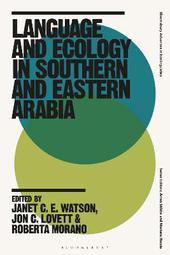
|
Language and Ecology in Southern and Eastern Arabia
Hardback
Main Details
Description
Regions of the world with greatest biodiversity are shown to exhibit greatest linguistic diversity, strongly suggesting that the relationship between language and ecology is both symbiotic and spatially and temporally determined. This volume examines the expressions of, and threats and challenges to, this relationship in southern and eastern Arabia. Exploring the ways in which indigenous languages reflect the close relationship between people and their natural environment, this book presents an overview of the key threats and challenges, and introduces the methodologies used to investigate them. Across the chapters, case studies are presented dealing with language, gesture and ecology, the significance of naming, the role of narratives in the language-ecology relationship, and conservation and revitalisation of bio-cultural diversity in Arabia. Taking a multidisciplinary view, this book argues for the central role that language plays in facing the challenges and threats to bio-cultural diversity, and presents methods for the study of the language-nature relationship that can be applied globally.
Author Biography
Janet C.E. Watson, Fellow of the British Academy, is Leadership Chair of Language at Leeds and Co-Director of the Centre for Endangered Languages, Cultures and Ecosystems at the University of Leeds, UK. Jon C. Lovett is Leadership Chair of Global Challenges and Co-Director of the Centre for Endangered Languages, Cultures and Ecosystems at the University of Leeds, UK. Roberta Morano is Postdoctoral Researcher of Arabic Linguistics and Ecolinguistics at the University of Leeds, UK.
ReviewsThis book represents a truly interdisciplinary approach to the ways in which language use (at the levels of vocabulary, metaphor, narrative structure, and gesture) reflects the natural environment of speakers, and presents persuasive arguments for taking speakers' intimate knowledge of ecological features into account in any efforts of conservation. It centres on case studies from the South East Arabian context, written by teams of local and international experts in the area. -- Eva Schultze-Berndt, University of Manchester, UK This book provides a detailed description of the geography and spoken languages of southern and eastern parts of the Arab world. It is illuminating and loaded with information about the region. The book helps find ways to preserve nature by preserving the language used in a certain ecosystem. Anyone who cares for the natural world should read this environmentally inspiring book. -- Dina A. Ramadan, Ain Shams University, Egypt
|